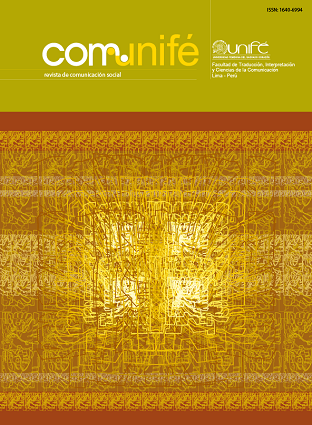Communication and Culture: Forging Identities Communication in Forming Teenagers’ Cultural Identity
DOI:
https://doi.org/10.33539/comunife.2013.n13.1850Keywords:
communicative practices, cultural identity, teenagers, ConacheAbstract
Communication as sociocultural process is essential to the life of human beings since it constitutes as a cross-cutting element in development of societies. Among culture and communication there is a deep association forging cultural identities through collective and direct personal interactions, as well as being exposed to traditional mass media, new information and communication technologies. The following article is an excerpt from the research: Comunicación e Identidad Cultural en adolescentes del Caserío Conache — distrito Laredo, basado en el Enfoque Culturológico (Communication and Teenagers’ Cultural Identity from Caserío Conache —district of Laredo, based on cultural approach); conducted with the purpose to identify communicative practices involved in forming teenagers’ culture identity in the rural area (Conache), located in district of Laredo, Province of Trujillo, Perú.
Design of research qualitative and method ethnographic. Were evaluated 30 students from high school level of Institución Educativa N° 80869 Alm. Miguel Grau Seminario de Conache, selected in accordance with the set out criteria as age, gender, education level and address from 6 to 10 grade. These students made up the sample. Data were obtained through participant observation technique, five focus groups with six students each one (three women and three men) a customized application One of the most important conclusions of the research is that interactions with 60 61 their peers and relatives, determine the traditional cultural patterns presence and / or some elements from urban sociocultural process that are incorporated into his/ her cultural identity. Mass media content has influence on adopting verbal expression forms, likes and preferences in personal grooming. Tics become essential to make easy her/his life to achieve academic goals and mainly family ones. This means that there is a growing recognition and preference toward technology in her/his cultural identity.
of a survey (as quantitative support resource).









